
Genetically-encoded fluorescent sensors
Specifications
Evrogen genetically-encoded fluorescent sensors are the complex chimeric proteins consisting of a fluorescent protein and a sensing polypeptide fused in a specific manner. The sensors demonstrate clearly detectable changes in fluorescence in response to corresponding cell events. Evrogen sensors allow precise targeting into various subcellular compartments or animal tissues and real time in vivo measuring of signals in natural intracellular surroundings.
Evrogen offers genetically-encoded fluorescent indicators for monitoring changes in intracellular concentration of calcium ions (Ca2+) and hydrogen peroxide (H2O2), and sensors for early detection of caspase-3 apoptosis.
Evrogen offers genetically-encoded fluorescent indicators for monitoring changes in intracellular concentration of calcium ions (Ca2+) and hydrogen peroxide (H2O2), and sensors for early detection of caspase-3 apoptosis.
- Direct expression in cells
- No exogenous chemical compounds or cofactors required
- High selectivity and sensitivity
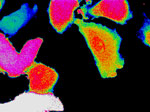
Available indicators
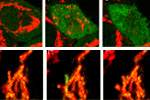
HyPer
Ratiometric sensor for high-specific detection of intracellular hydrogen peroxide.
- Response to rise in H2O2 concentration leads to decrease in sensor excitation peak at 420 nm and proportional increase in excitation peak at 500 nm
- Ratiometric measurement
- High specificity and sensitivity
- Capability of targeting the sensor to the specific cell compartments
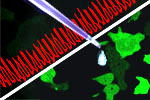
Case 12
High dynamic range sensor for detection of intracellular Ca2+ changes.
- Response to rise in Ca2+ concentration leads to significant increase of the reporter’s brightness
- High dynamic range
- Relatively high pH stability
- Capability of targeting the sensor to the specific cell compartments
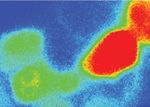
Casper3-BG
Highly sensitive FRET-based sensors for early detection of caspase-3 activity onset.
- Response to activation of caspase-3 leads to elimination of FRET between TagBFP and TagGFP2 fluorescent proteins, resulting in the decrease of green and increase of blue fluorescence
- High sensitivity
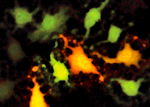
Casper3-GR
Highly sensitive FRET-based sensors for early detection of caspase-3 activity onset.
- Response to activation of caspase-3 leads to elimination of FRET between TagGFP and TagRFP fluorescent proteins, resulting in the decrease of red and increase of green fluorescence
- High sensitivity
- Proven suitability for FLIM-based screenings


